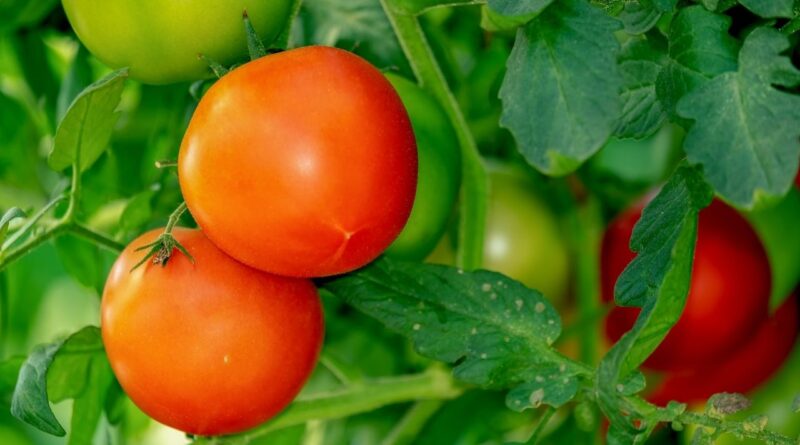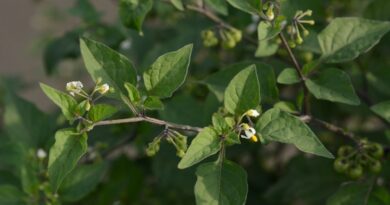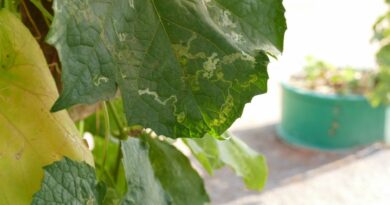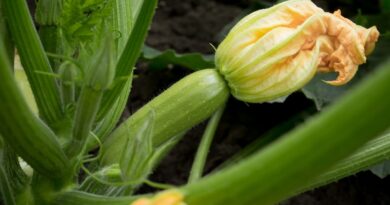How To Grow Tomatoes
Tomato Farming
Tomato (Lycopersicum esculentum) in the Solanaceae family is widely grown as the source of income and also consumed vegetables in Kenya. It is believed to have originated from Peru, domesticated in Mexico and introduced by Spanish explorers in Europe at around 1544. Here in Kenya, tomatoes were first introduced by European explorers at the sun rise of the 20th Century. Tomatoes are short-lived crops in the tropics and warm season. Tomatoes can be of determinate variety (non-staking) or indeterminate variety (staking) or semi indeterminate. Varieties-Anna F1, Faulu Tomato, it is one of the fastest growing tomato varieties in Kenya, reaching maturity 60-70 days after transplanting, Mavuno F1, Money Maker, Marglobe Tomato, Randah F1, Rio grande, Cal J Sowing Method: tomato is suitable for both indoor and outdoor environment and also can grow well in the field and also in containers Sowing Depth:For seeds sowing 15cm apart and 1-2cm deep and for transplanting 90 cm apart and 12cm for both field and pots Soil Type-The soil should be deep well drained fertile loam soils, it should be well prepared, loosened and broken down well. Test the soil to determine your soil fertility. Soil PH-Tomato performs better within a PH of 6.0-7.5. If the PH is low- lime to increase it and if it’s high applied gypsum to lower it. Seed Rate-35-40grams of hybrid seed is enough for one acre. Germination Period: Germination takes about 7 days, remove mulch and erect the shade above the tender seedlings. Transplanting Period:·Transplant of seedlings takes 4 weeks after sowing. Transplant when seedlings have 4-5 well formed true leaves. Feeding:Apply 2-3 tonnes of well decomposed farm yard manure in an acre at the time of final land preparation. Vegetative stage:During the vegetative stage, stems and leaves develop, and they require nitrogen to do so
Flowering Stage: Flowers necessitate lower nitrogen levels and greater potassium and phosphorus levels are required. Fruit setting: as flower fruiting need more potassium for for optimum fruit development and growth Pollination:The flowers on tomato plants contain both male and female reproductive parts, so the flowers self-pollinate without needing help from bees. Wind and external vibration of the flowers causes the heavy, sticky pollen grains to dislodge from the male parts, falling to the female reproductive organs, and fertilization begins. Immediately after fertilization, the fruit set occurs. Sun / Shade: Two weeks before transplanting reduce the shade to improve seedling survival rate in the field (hardening off) because the plant full cycle requires sun Water:After sowing, irrigate the nursery bed to improve on moisture and then continue watering regularly. Amount of Days Before Harvest: Tomatoes take 75 days to full maturity Harvesting and Storage Tomatoes are ready to harvest when the colour of the fruits changes from green to orange or red. Harvest only ripe fruits. When harvesting, ensure the highest standards of hygiene-this will ensure a long productive harvesting period. Use bread crates when picking to avoid unnecessary damages on the fruits. After harvesting remove the field heat by cooling the tomatoes under shade Common Challenges: Tomato as a fruit plant has several challenges from weather disturbance to pests to diseases but all in all there are several mitigations to have an optimum production. Pests that affects tomato mostly are CUTWORMS They chew through stems of seedlings overnight, killing them. It’s a greenish or greyish,hairless worm of waxy appearance.it curls up into a little ring when held in the hand, it’s found in the vicinity of a cut plant, it is a caterpillar of the noctuid moth. They hide in the soil during the knight and only emerge at night to feed on the young plants. APHIDS Clusters of small sap-sucking insects, usually under leaves. Will reduce plant vigour and can spread plant diseases. They are delicate pear shaped soft bodied insects with long legs and antennae. They are usually green, yellow, dark or black in colour with or without transparent wings. Heavy infestation causes yield losses and sunburn. WHITEFLIES
Tiny white-winged sap-sucking insects that congregate on the undersides of leaves, reducing plant vigour. Adults fly from plants when disturbed but quickly resettle.They are small insects about 1-2mm long, they hold their wings somewhat roof-like over the body,wings don’t meet over the back but have a small space separating them AFRICAN BOLLWORM
They enter fruit at a young stage. Fruit continues to grow with the caterpillar developing inside. Rot occurs as fruit ripens. Adults are brown moths which fly at night laying eggs about 0.5mm on plant parts. At hatching the larvae are creamy white caterpillars with a black head. They vary in colour from yellowish to green to black with white lines on the back.Cover crops with fruit fly netting to keep adult moths from laying eggs on plant material. THRIPS These are minute insects less than 1mm long in length with four long, narrow fringed wings.The immature stages are yellow in colour.Adults are usually dark with a habit of turning up the tip of the abdomen.They feed by rasping plant surface causing small silverfish blotches, they feed on lower leaf surface, buds flowers and fruits. When flower buds are attacked floral abortion occurs and the affected fruits are of poor quality. They are vectors of viruses like tomato spotted wilt virus. ROOT KNOT NEMATODES
They are pear-shaped thread like worms about 0.01inches long, They live in the soil and get food from sucking root sap causing root knots also called galls. They can be seen by hand lens when the galls are cut open. The galls interfere with movement of water and nutrients effectively, Infected plants are less vigorous, stunted and respond poorly to fertilizers. Nematode infection makes it easier for diseases to infect the tomato plant SPIDER MITES
They are minute reddish brown “spiders” with four pairs of legs of equal length and with an oval body.Their legs are creamy usually on the leaf surface.They protect themselves from predation by webs on the underside of the leaves. Diseases are other challenges for tomato growth. Some diseases include EARLY AND LATE BLIGHT It is a seed borne disease that results in poor germination of seedlings, favoured by warm wet conditions. It is noticed when small dark brown to black spots on lower shaded leaves, stems and fruits, leaf spots are boarded by a concentric leathery tissue. Spots in fruits often occur near the calyx end of the fruits. In seedbed the small plants wilt and die eventually.in older crops, stems death occurs while leaves fall off the crop and fruits drop prematurely. It’s a minor disease during the dry season however it is most serious during cool moist conditions. Spores of plants can transfer the disease from one plant to another. The disease forms irregular greenish or water-soaked lesions on the leaves, stems and fruits, leaves develop bluish grey patches, turn brown, wither but stay attached to the plant. Fruits develop watery spots on the upper half of the fruit. The disease leads to rapid death of entire plan DAMPING OFF
The fungus is common in moist soils and may survive for several seasons. Infection is through the roots or leaves which are touching the soil or have been splashed by water or rain. Overcrowding, poor drainage, compacted soil and inadequate ventilation increase the chances of seedlings getting infected. Infected seedlings fail to sprout and if they do, they have ‘wire-stem’ characteristics. The greatest loss is the death of seedlings in the seedbed. Attacked plants are less vigorous. VERTICILLIUM WILT It begins with yellowing on the bottom leaves and works its way up the vine. The vines eventually brown and wilt and may die. Common in hot weather. Remove and destroy infected plants. If symptoms persist, grow in pots of fresh potting mix, which is a solution for most wilts. Alternatively, spray chariot it works best against the disease. BACTERIA WILT
Young leaves wilt in hot weather, despite adequate soil moisture. The plant remains green but rapidly wilts and dies. To confirm infection, cut the stem at the base of the plant and suspend it in water. If bacterial wilt is present, a white slimy substance will be released. There is no cure. Lift and destroy immediately OR Use Chariot to help in sustaining the crop till you complete harvesting. ANTHRACNOSE
Affects ripe or ripening fruit. Shows up as small soft, sunken waterlogged spots. Common in fruit near the ground and spread by splashing water. Keep staked with fruit clear of the ground. Remove diseased fruit from plants and soil surface. Spray remaining fruit with NEEM OIL as ripening begins. Use crop rotation. Seed in diseased fruit will be infected so use healthy seed for new crops. BLOSSOM END ROT The problem is caused by calcium deficiency, any rapid change in water and poor root development. It begins as a tiny water soaked area at the blossom end of the fruits; it later enlarges and becomes sunken. The sunken part of the fruit turns black turning the bottom of the fruit brown. Imbalance of nutrients is another problem for tomatoes. Some of the deficiencies that can affect production are NITROGEN
Stunted growth, older leaves are yellow and younger leaves turn pale green Add well aged manure or compost also dilute fish emulsion or small amounts of dry chicken manurebut also do not put excess because too much nitrogen encourages lush leaves with little fruit PHOSPHOROUS
Stunted growth. Purpling leaves, particularly the undersides. Check your soil pH – phosphorus is unavailable when pH is too high or too low. POTASSIUM Browning scorching on the leaf margins and chlorosis(yellowing) between the leaf veins. Blotchy ripening in fruit Apply foliar spray and lightly sprinkle rock potash or wood ash around the plant. Water in and add well aged manure and compost IRON Pale yellow leaves or interveinal chlorophyll particularly of the younger leaves This can be soil PH I too much alkaline and thus you need to spray foliar rich in sulphur CALCIUM Blossom end rot or darkening at the fruit and also browning around the base of the leaves Spread agricultural lime and water well to correct deficiency MAGNESIUM Its seen on leaves having yellow leaves with distinct green veins. Spray a diluted mixture of epsom salt |




